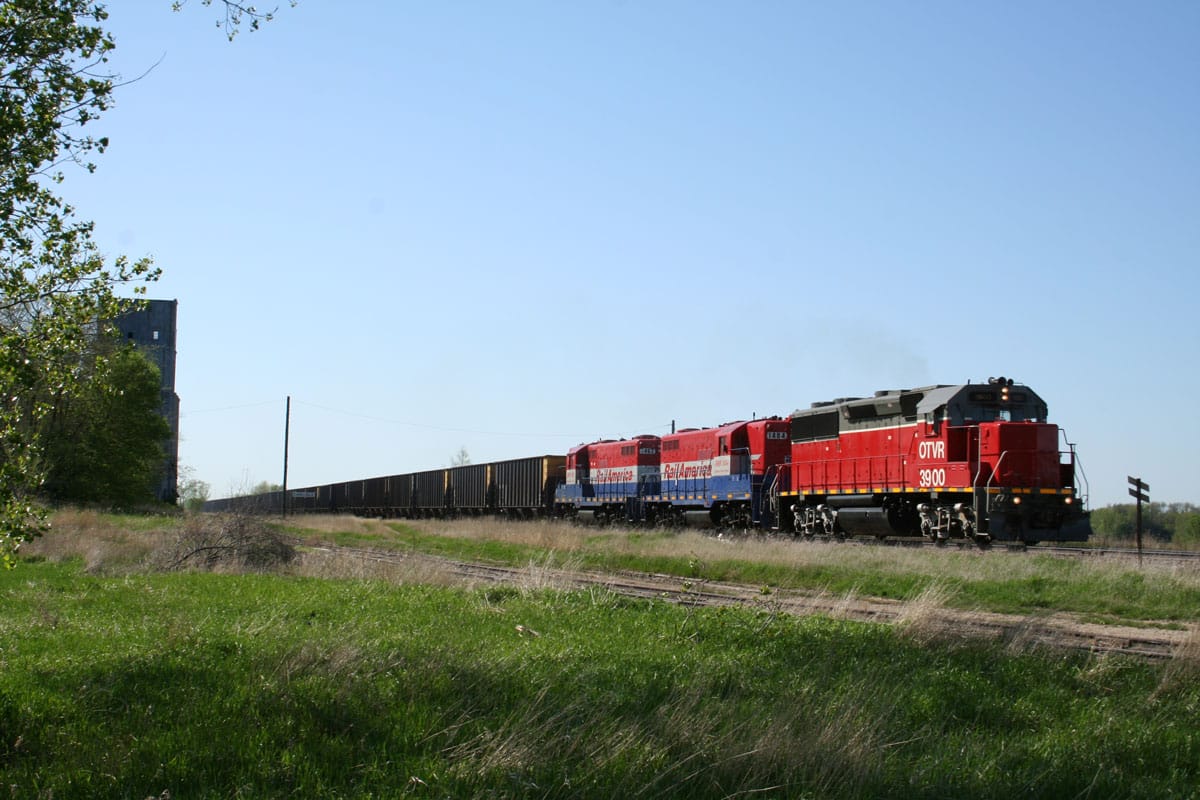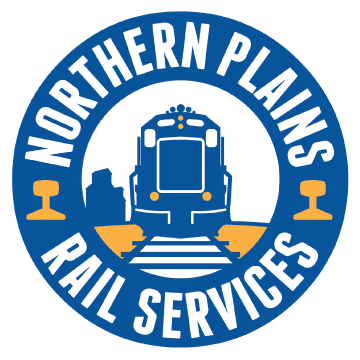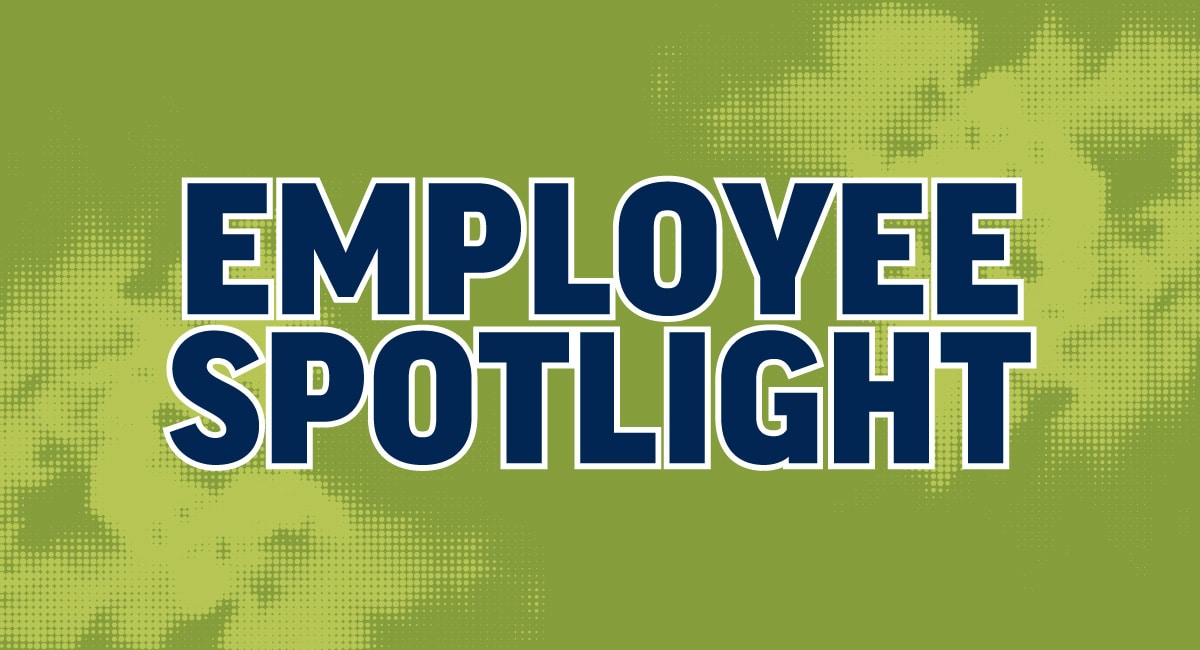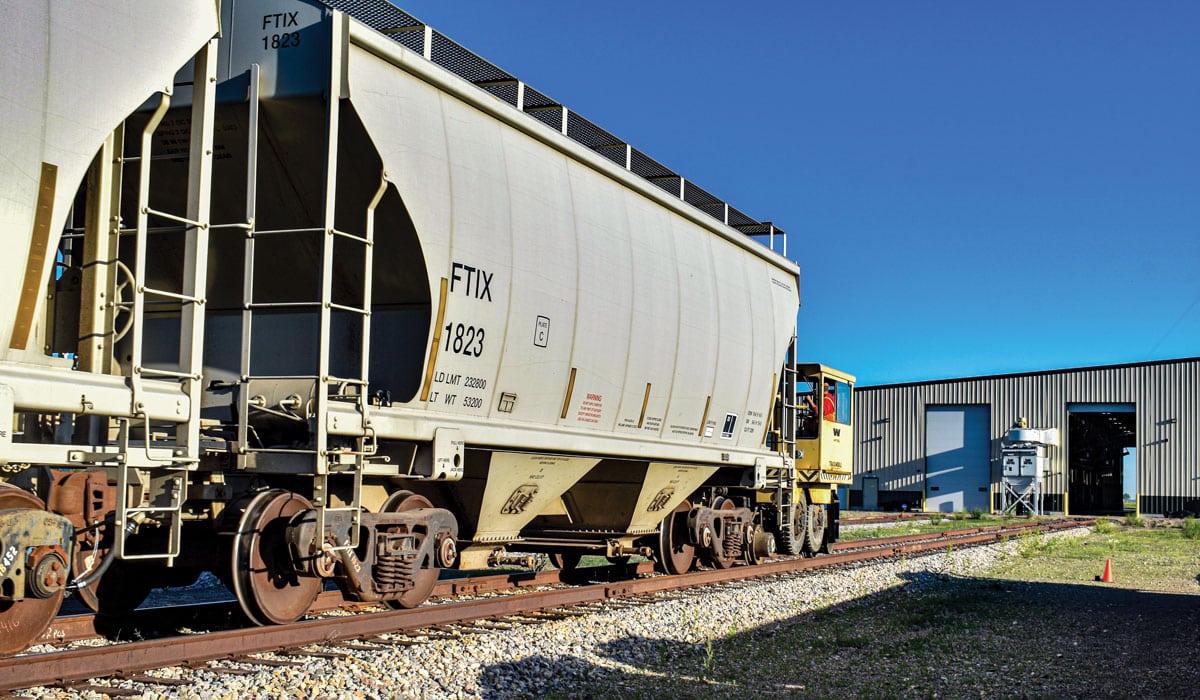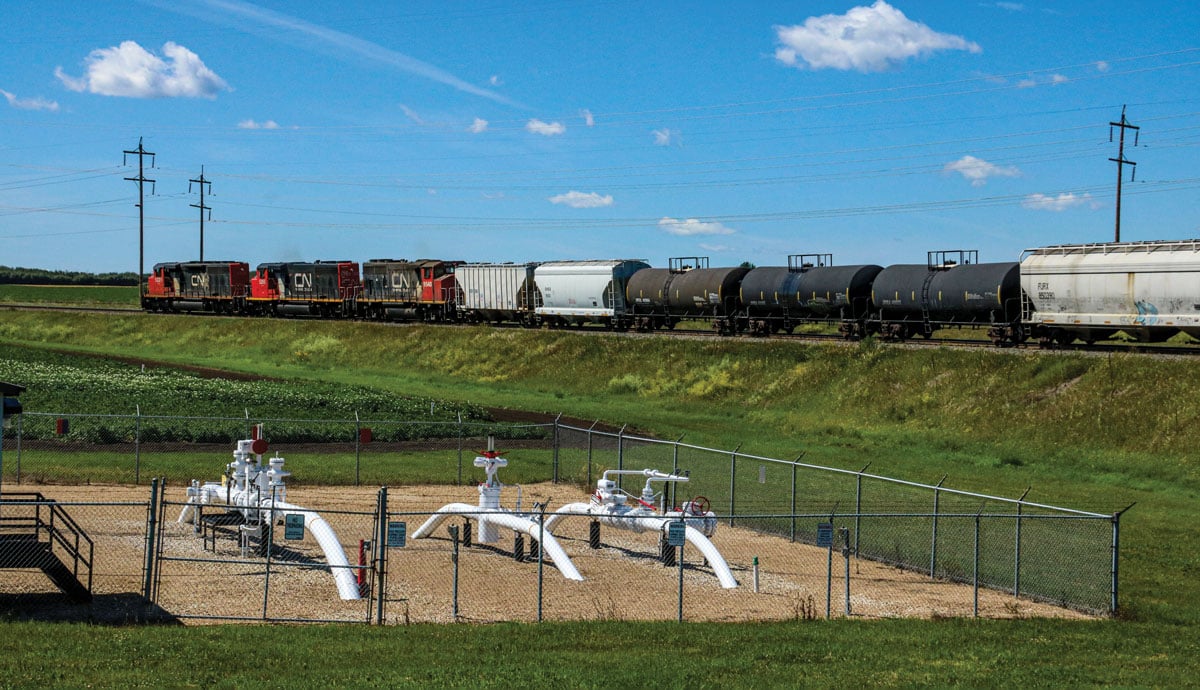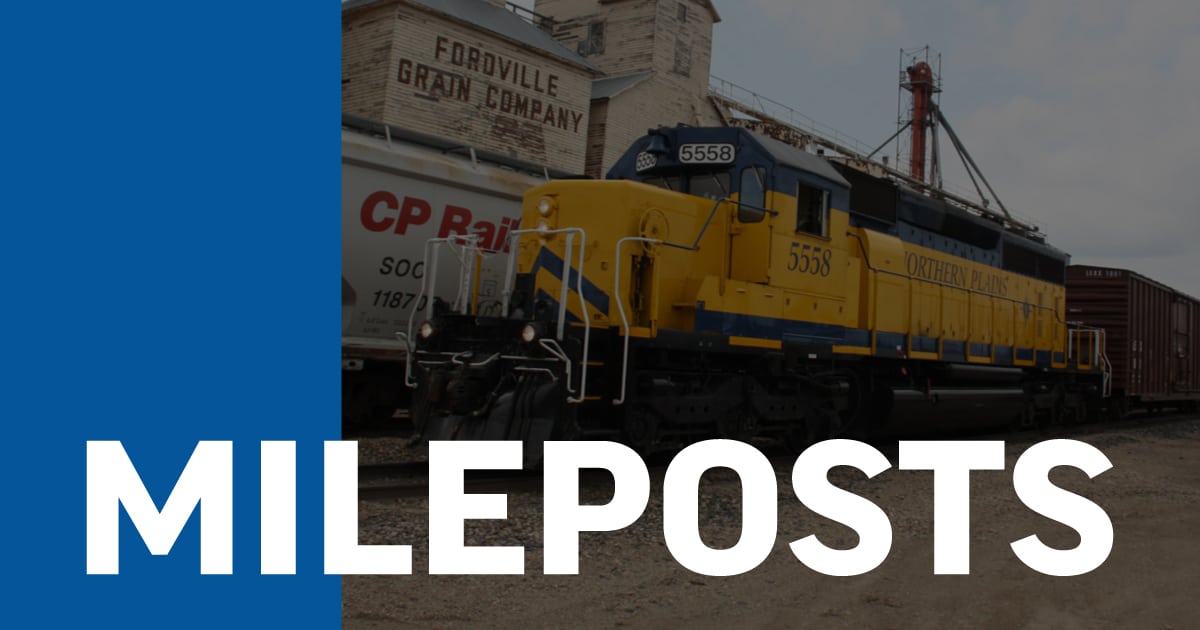
Mileposts: Harvest Edition 2022
A short line railway. Historically, the term “short line” conjured up images of an independent railroad, perhaps stabling a few tiny steam locomotives or diesel switchers, serving a terminal district or several small factories. Looking back in the north American context, many lines such as the Canadian Northern Railway began as short lines, owned and financed by entrepreneurs—some of whom became legends in the industry. By the turn of the last century, however, many of these historic short lines were folded into the large systems of the time, predecessors of today’s Class 1 railway networks. It would take bankruptcies and government regulatory actions to once again create an environment where short line railways would thrive, and shippers would again experience that local touch.
By the time NPR was created in 1997, Class 1 railroads had been “spinning off” lines to smaller independent operators for over a decade. By reducing operating costs, offering responsive service, and utilizing an intense focus on marketing, these line divestures have ensured that hundreds of rural communities continue to have rail service. Without short lines, thousands of miles of light density railway throughout north America would have been destined for the scrap yard. Without them, hundreds of thousands of carloads would not exist for Class 1 connections to move.
I like to say that I have had “a front row seat at the movie”, watching and being part of the evolution of the short line industry. In 1986, as a young railroader, I witnessed Canada’s first short line operation in more than fifty years arrive in my home community. Later, I was interested enough that I was lured from a career at CN to become part of this growing railway. Although after 18 years in the short line business I would return to the Class 1 world, I could never shake my desire to be part of a short line operation. After being invited to NPR’s 15th anniversary celebration in 2012 and experiencing the infectious enthusiasm of Gregg Haug’s team as they described their growing business to the invited guests, I was inspired to return, and I have been thankful for my association since that time.
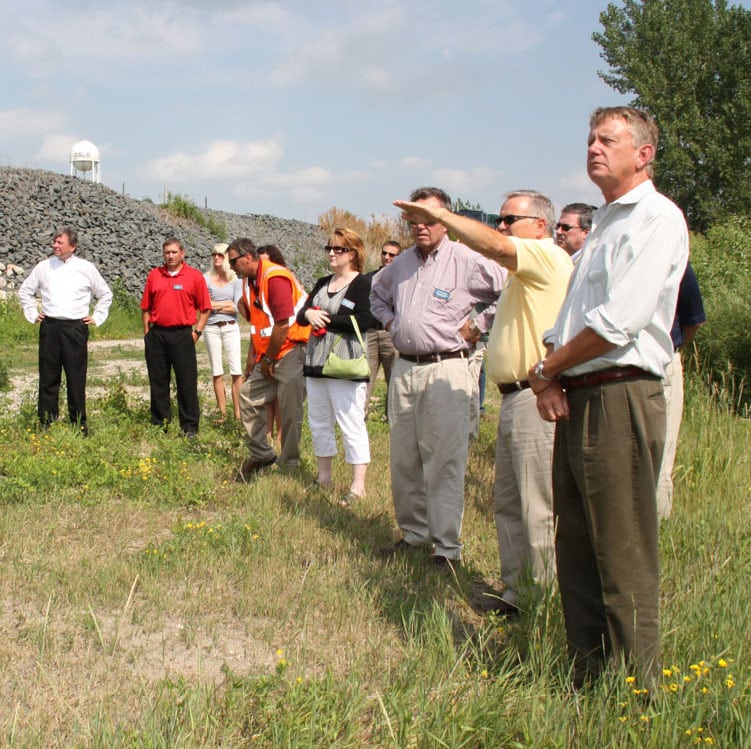
Ten years ago! Then-Company president, Larry Jamieson, describes the capital improvements to the NPR/CP bridge over the Red River at Oslo, MN, while Jesse Chalich (left) and Gregg Haug (far right) lead the guests and fellow railroaders on a tour celebrating the company’s fifteenth anniversary.
All good railroaders believe in safety, in delivering service that shippers truly value, and in finding efficient ways to do business. They also know the value of people—hence, many short lines have been blessed with little staff turnover. For a decade, I’ve watched both NPR and its leaders grow. This group is now running a widely respected organization to be proud of.
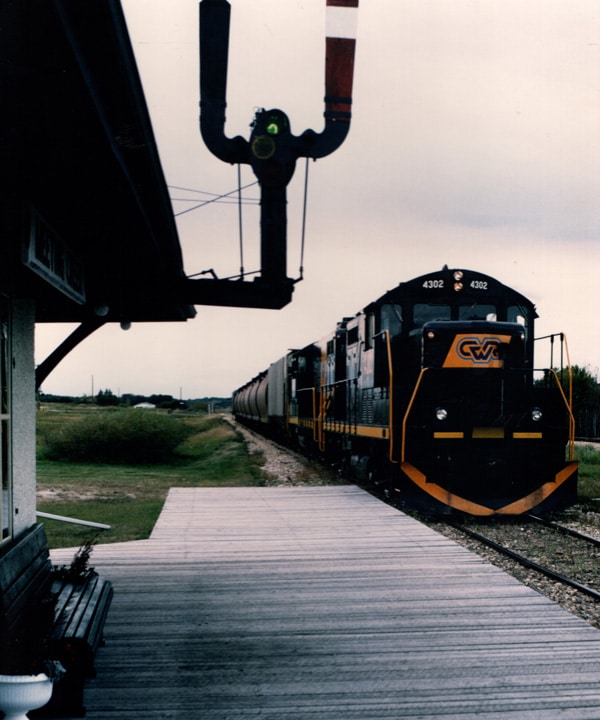
Short line railroading is not easy or for the faint of heart. Often, you find yourself the only person to do the job; there is no one to fill in or pick up the slack when you’re having a bad day. The hours can be long. There are regularly challenging and stressful situations dealing with weather, aging infrastructure, seventy-year-old locomotives, competing scheduling priorities, and a changing workforce. However, listening to a customer provide a sincere “thank you” for delivering his empty as scheduled, or to an employee describing her plans to make a positive change that will result in a better process, makes it all worthwhile.
With its “North wayfreight” trundling through Meeting Creek in 1994, Central Western Railway—Canada’s first short line—was known for excellent customer service. This legacy continues under its successor, the Alberta Prairie Railway
When I look back, I can’t help but reflect that while not necessarily growing in numbers of railroads, short lines still have so much to offer. This is an industry that does extremely well delivering upon first- and last-mile commitments to customers. Small railroads and terminal operators like switching, and understand it is part of the business. At NPR, we’ve found ways to move local freight short distances by leveraging second-hand equipment and a market niche. Further, it’s hard to not get excited when you have a chance to serve a new customer, design and build track for a plant expansion, or give a shipper advice on how to operate and maintain an industrial locomotive. Not only are short lines focused on building new business, often starting with a single carload of traffic, but they are excellent innovators, and true ambassadors for the industry at large.
As Northern Plains Railroad turns 25, I think we can truly say that this is a railroad ready to take on its future. I am confident it will do so with solid leadership, a focus on sustainability and on implementing new technology, and with a continued passion for economic development and growth. Underpinning this will always be safety and the satisfaction of providing the best possible service for both the shipper and connecting railway. Despite the territory being “dark”—the future is indeed bright!
–Shawn I. Smith, Executive VP of Northern Plains Rail Services
